Table of Contents
Shoulder Basics
The neck and ribcage could be considered the base or foundation for the shoulders. Being aware of and controlling the neck, ribcage and spine can be the first step towards developing better shoulder control and flexibility.
Neck Stretch and Strengthen
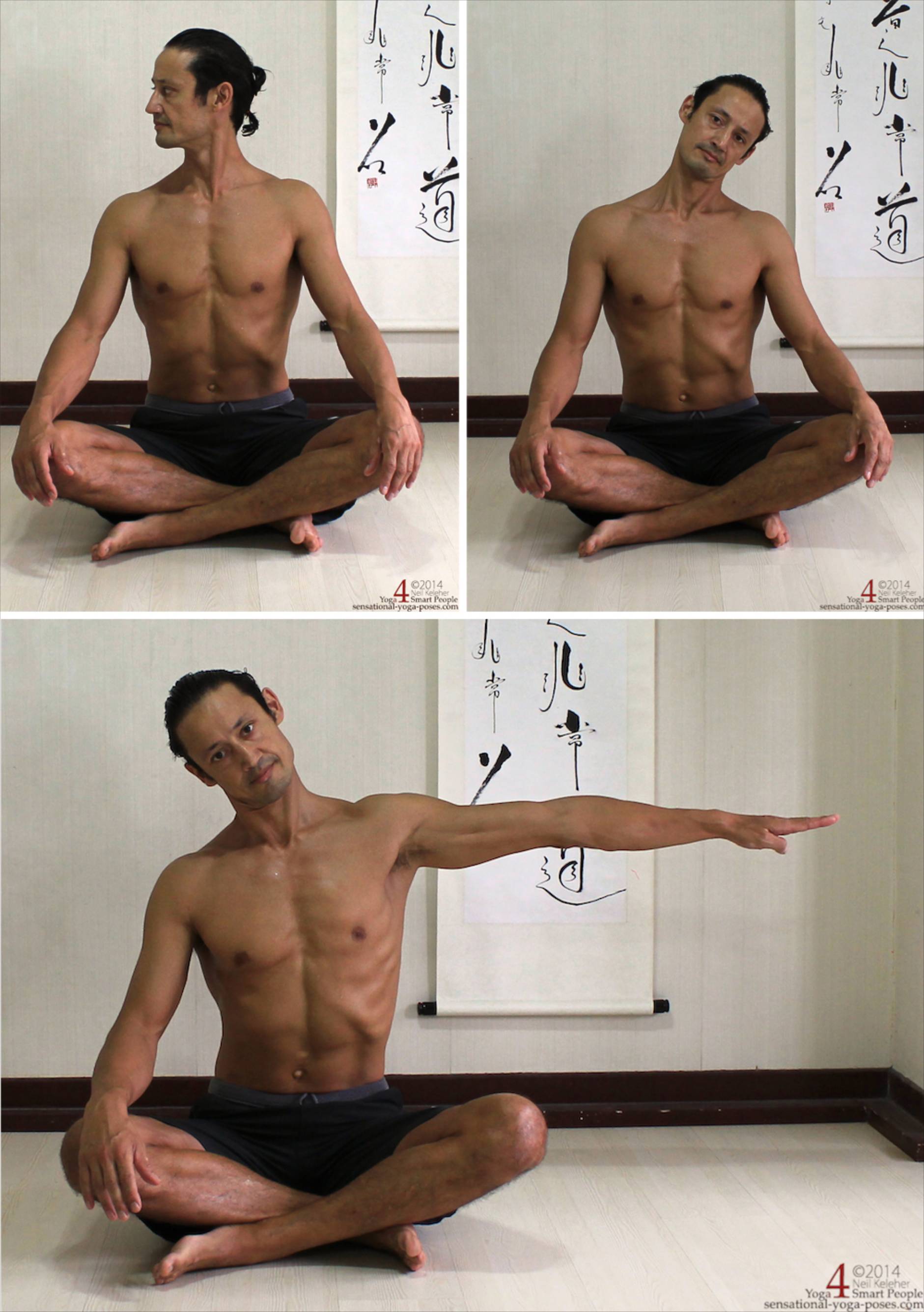
1. Twisting the neck.
2. Side bending the neck with arms down.
3. Side bending the neck with arm on “long side of neck” lifted to the side.
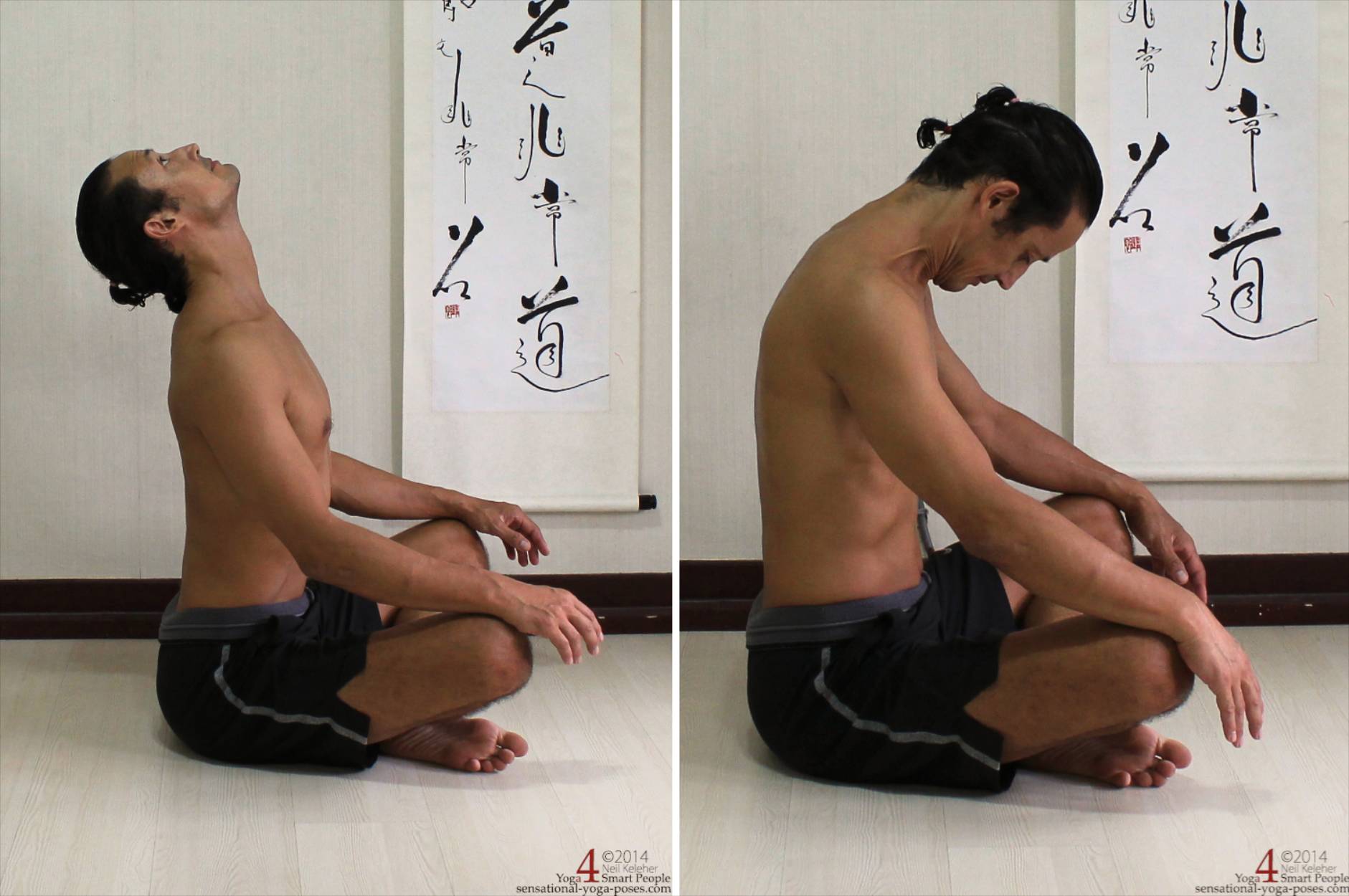
While stretching the neck, work at keeping your ribcage and shoulders stable. Also keep the ribs lifted and open so that the ribcage feels like it is expanded (and not just “lifted”). When twisting the neck work at keeping your ribcage square to the front.
Three basic neck movements are:
- twisting
- side bending
- front and back bending
Stretching the neck in any of these movements can be made more effective by activating the neck muscles while stretching it. In bends to the side, front or back you can contract the muscles on the short side1 of the stretch, or you can contract the muscles on the long side of the stretch. Or you can contract both sets of muscles. I’d suggest trying all three methods and notice for yourself which method works best.
In all cases work to maintain the stretch or deepen it. In addition, work at adding tension and decreasing is smoothly and gradually.
Note that for twists its a bit harder to say which side is short and which side is long. So either activate the muscles on the side you are twisting towards, or on the side you are twisting away from, or both sides.
- In the neck twist imagine each vertebrae twisting relative to the one below it.
- When side bending the neck, if bending to the right imagine the left side of each vertebrae moving away from the left side of the vertebrae below. (For the side-bend, experiment with reaching the arm out to the side on the side you are leaning away from.)
- For the front bend and back bend, imagine the backs or fronts of the vertebrae moving away from each other respectively.
Bending the Ribcage Forwards and Backwards
This exercise can be done either sitting or standing.
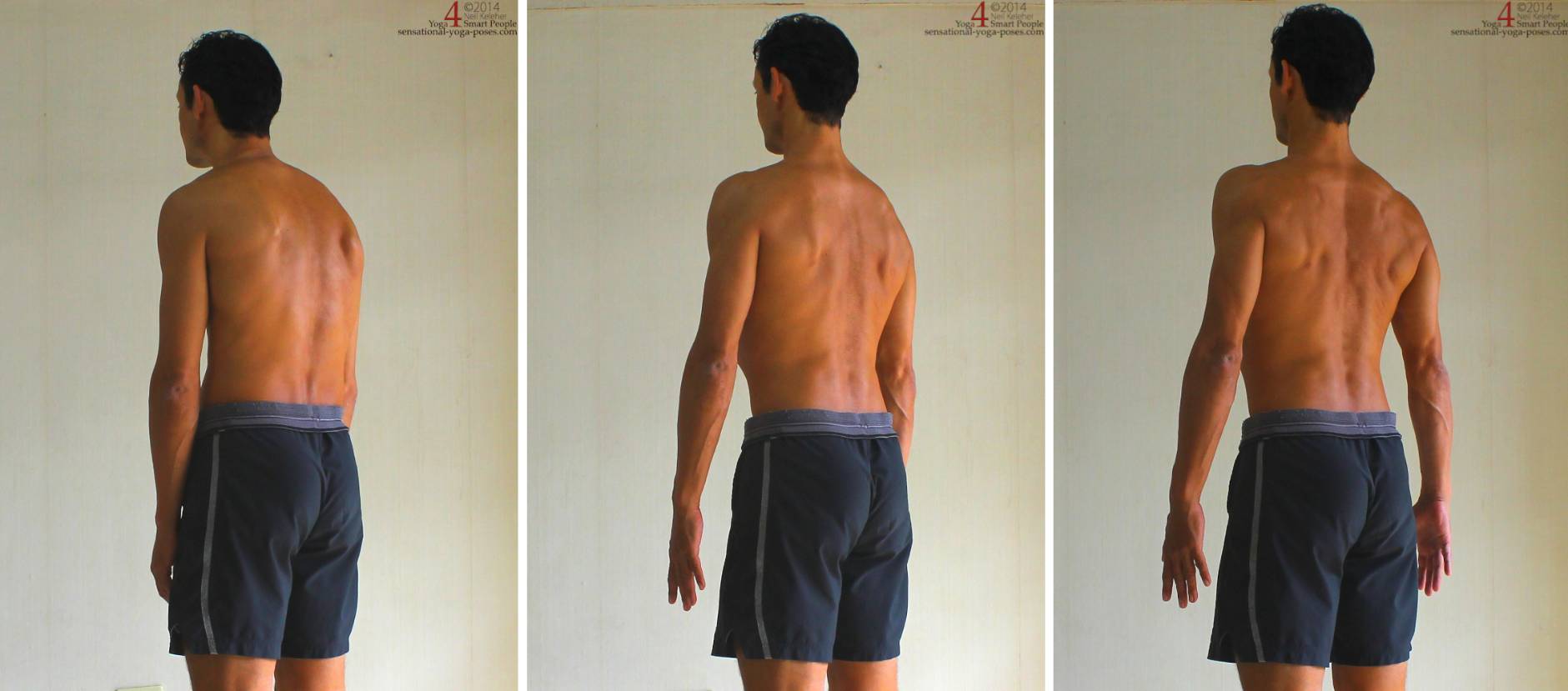
1. Relaxed
2. Lift and expand front ribs
3. Pull head back and up (and pull chin down).
Basic Set Up Sit or stannd with the torso upright. (If you have difficulty, start sitting, and then try the exercise while standing.)
- As you lift your ribs away from your pelvis your waist will lengthen.
- As you let the ribs sink down towards the pelvis the waist relaxes.
Notice how these movements affect the spaces between your ribs.
- See if you can feel the spaces between your ribs and between ribcage and pelvis expanding as your lift the ribs.
- Notice the reduction in tension as you relax.
You could focus on pulling the back of your ears up and back during the lengthening phase.
To build on this exercise, see if you can feel your side ribs expanding and lifting. Then see if you can feel the backs of your ribs lifting.
- What’s the short side of the stretch? Bending the neck to the left (so that the left ear moves closer to the left shoulder) then the short side of the stretch is the left side. The long side is the right side. Contracting the short side of a stretch uses opposing muscles to actively stretch the muscles being stretched. Contracting the long side means that the muscles being stretched are active (and if you continue to move deeper into the stretch then they are lengthening while active). Contracting both sides means that the two sets of muscles are working together, with one side slightly stronger than the other. ↩
Basic Scapular Control
Basic movements of the shoulder blades include: lifting/elevation, protraction/spreading, retracting. There is also depression, rotation so that the eye of the shoulder socket looks upwards (supraversion) and the opposite rotation where the eye of the shoulder socket looks downwards (infraversion.) There are also combinations of these movements.
The movements below are introductory movements to get you used to feeling the shoulder blades and several important land marks including the peak or roof of the shoulder (the accromion process), the inner edge of the shoulder blades (or medial border), the bottom tip of the shoulder blades (inferior angle)
Elevation 1
Do the following while sitting or standing with the torso upright.
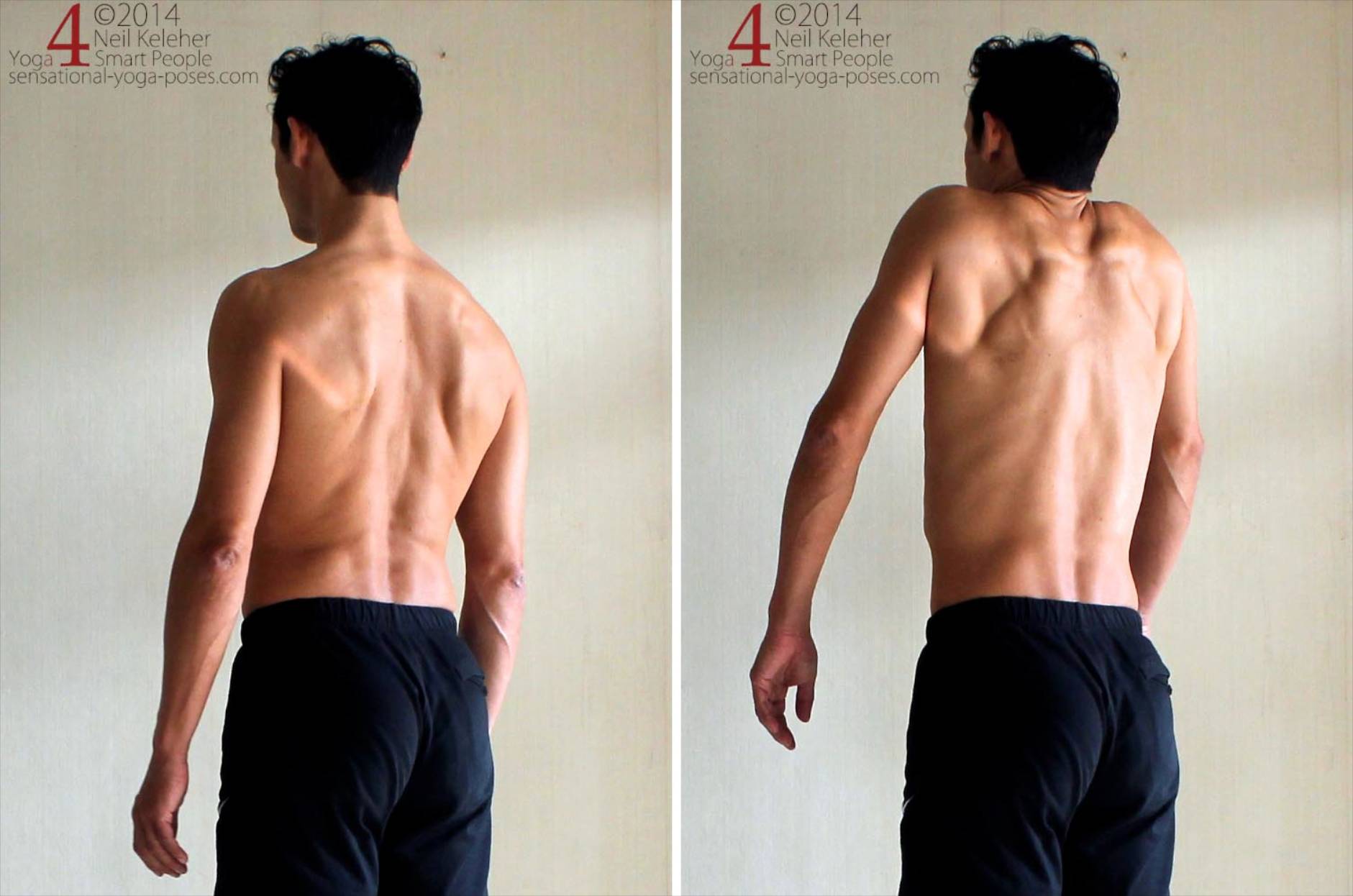
Starting with shoulders relaxed, move shoulders upwards (elevation). Then let the shoulders sink back down to relax.
Relax and repeat.
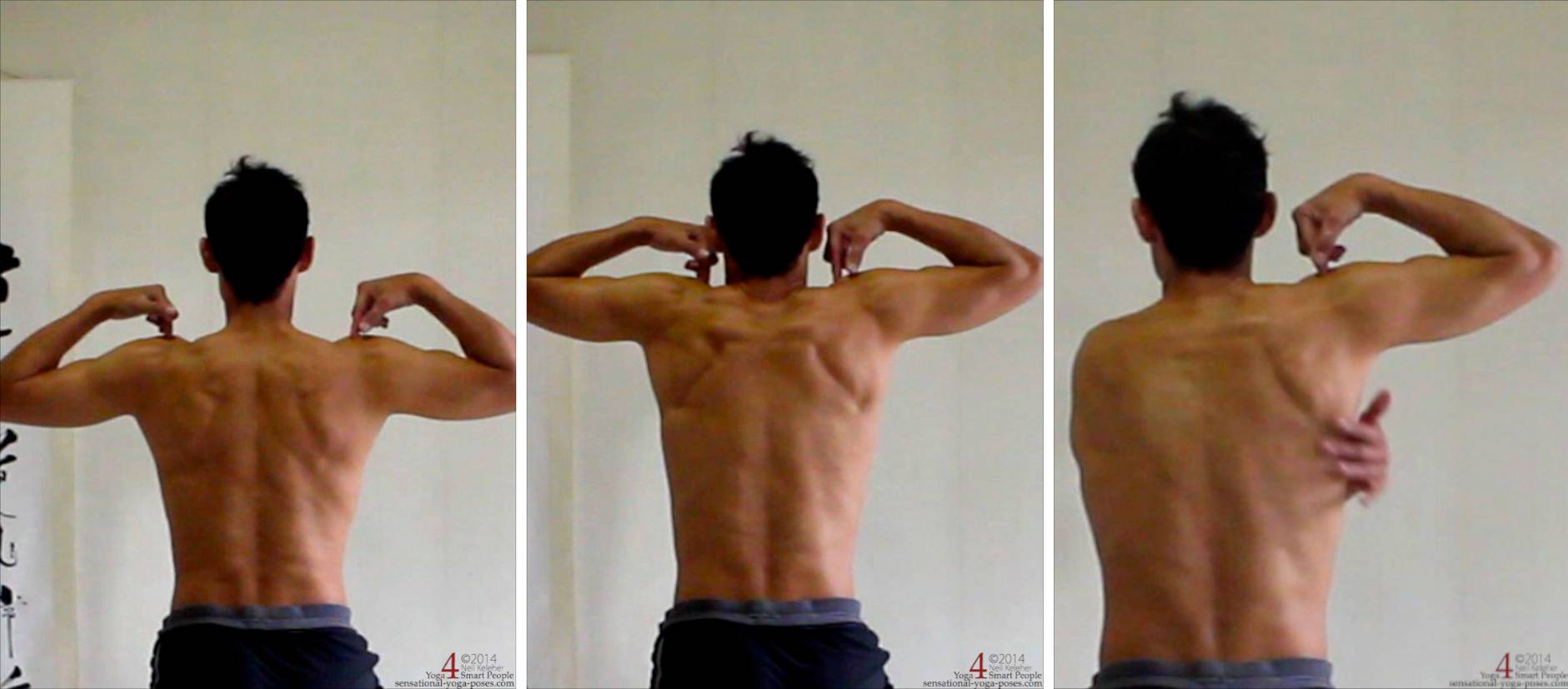
Elevating one shoulder at a time, use the free hand to feel the bottom tip of the working shoulder. Feel the bottom tip moving outwards (and upwards) as you lift the shoulder.
Keeping your chest lifted and open, lift your shoulders then let them relax back down. When lifting focus on the “peaks” of the shoulders, the bony peaks at the top of each shoulder. Try to draw these points on each shoulder upwards and inwards when lifting the shoulders so that you activate the middle fibers of the trapezius.
You can also focus on lifting or pulling upwards on the outer end of each collar bone. Doing so will help to maximize the likelihood activating the upper fibers of the trapezius muscles.
You may notice that as you lift the shoulders the bottom points of the shoulder blades move outwards so that the “eye” of the shoulder socket looks upwards (supra-version).
Protraction
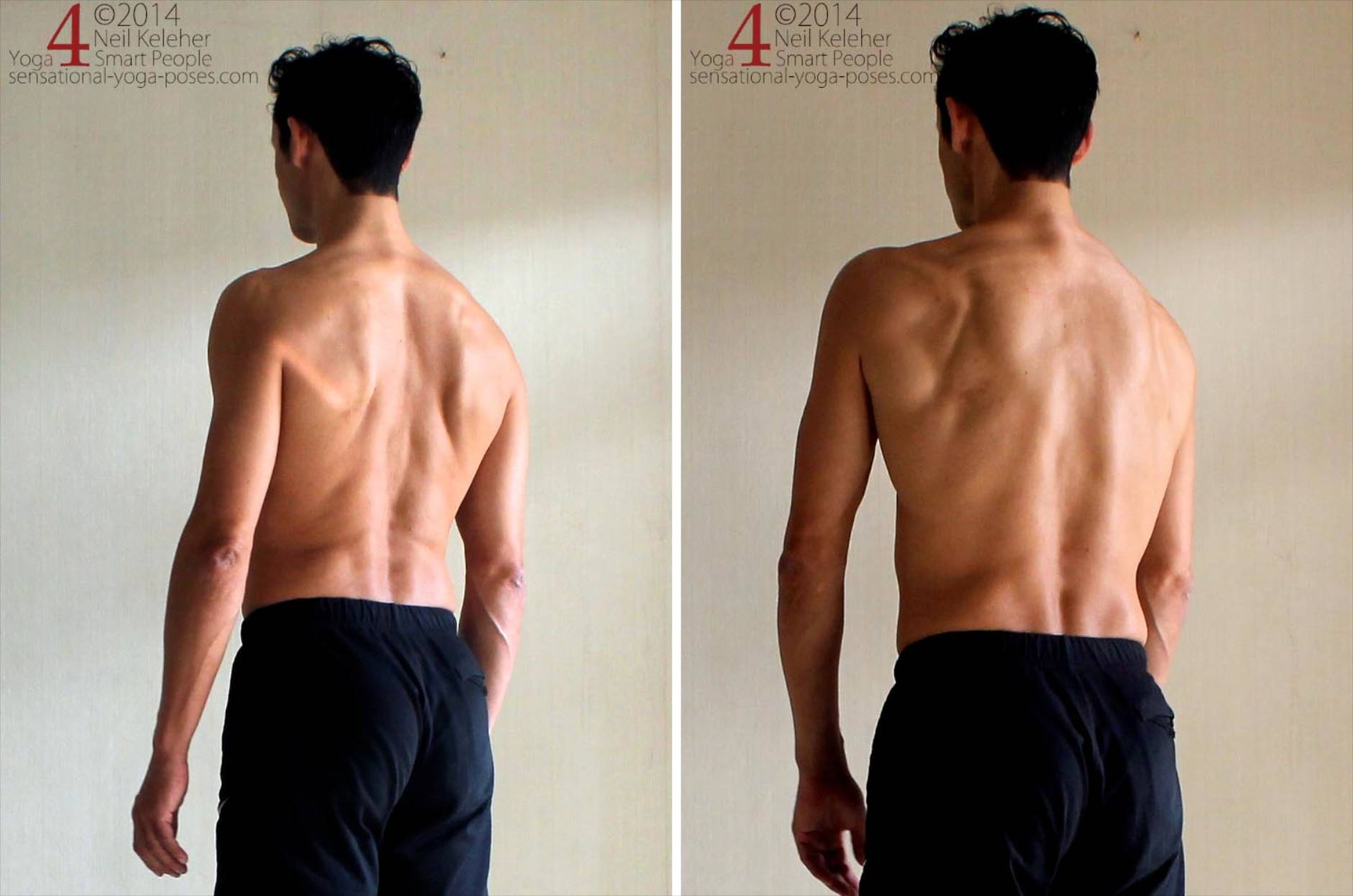
Relax and repeat.
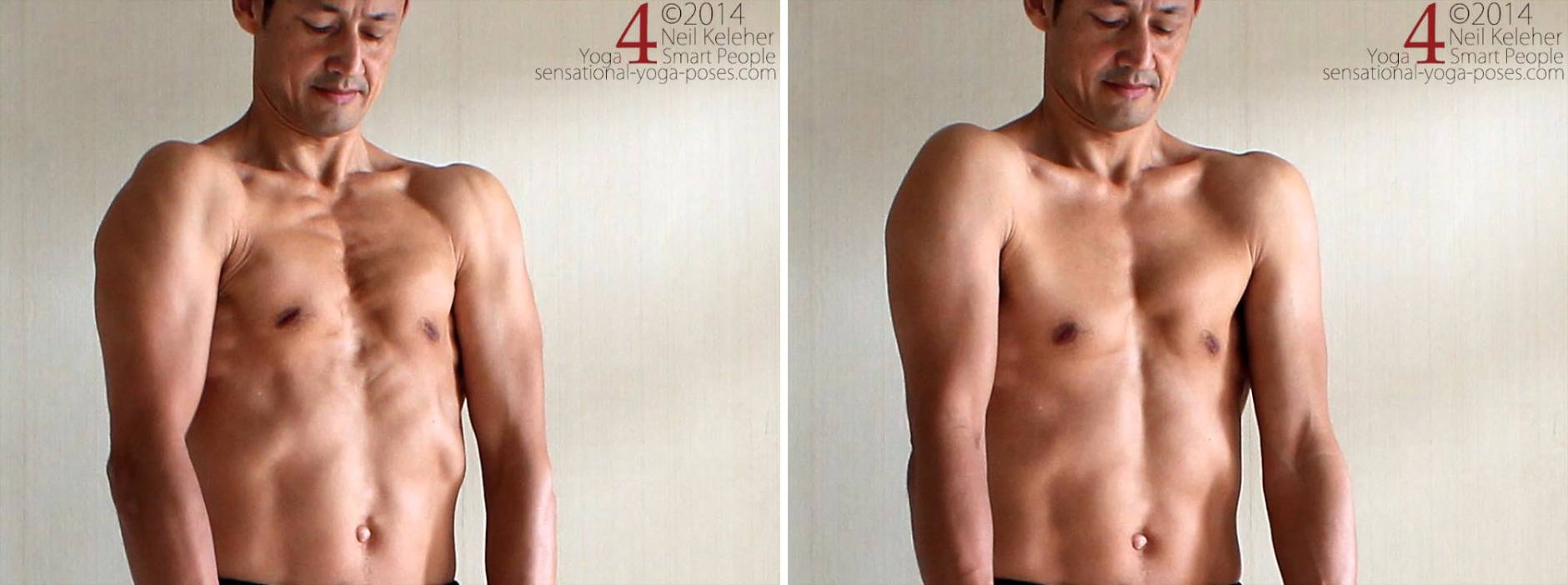
Try to avoid this and instead keep your chest relaxed as in the second picture.
Sitting or standing with torso upright and chest lifted and expanded, move the shoulders forwards. Then relax them.
After repeating a few times focus on feeling your shoulder blades moving outwards (away from each other) as you move your shoulders forwards. Once you have a feel for your shoulder blades then focus on feeling the inner edges of your shoulder blades.
Focus on spreading the inner edges of your shoulder blades so that your shoulders move forwards.
If you focus on the inner edges of your shoulder blades you are more likely to be activating the serratus anterior muscle.
Also, when doing this exercise keep your pectoralis major muscles relaxed. To make this easier, try contracting your pecs to pull your shoulders forwards. Repeat a few times noticing the difference in feeling between relaxed and active. Then, while focusing on the inner edges of your shoulder blades, keep your pecs relaxed as you spread your shoulder blades.
Retraction for Rhomboids
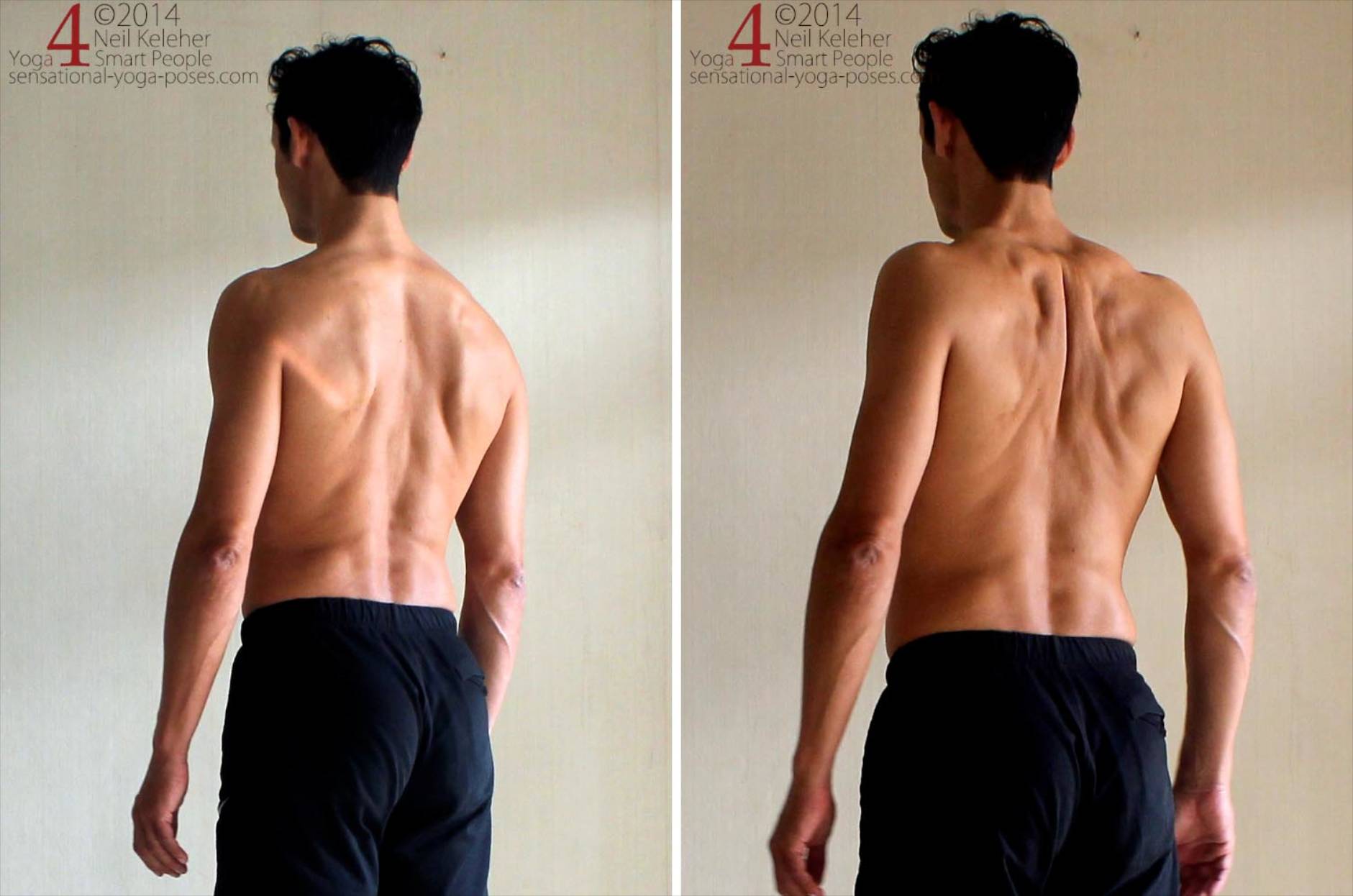
Keeping chest lifted and expand, move your shoulders backwards and slightly upwards. You may feel a squeezing sensation between your shoulder blades. This is the rhomboids (and/or lower trapezius) activating . Relax and repeat.
Once you have a feel for the action focus on the inner edges of your shoulder blades while doing the movement. Try to pull the inner edges towards each other.
Avoiding Shoulder Impingement
The technical name for the upper points of the shoulders is “acromion process”. It could be thought of as the “roof” of the shoulder. I also refer to it “the peak” of the shoulder.
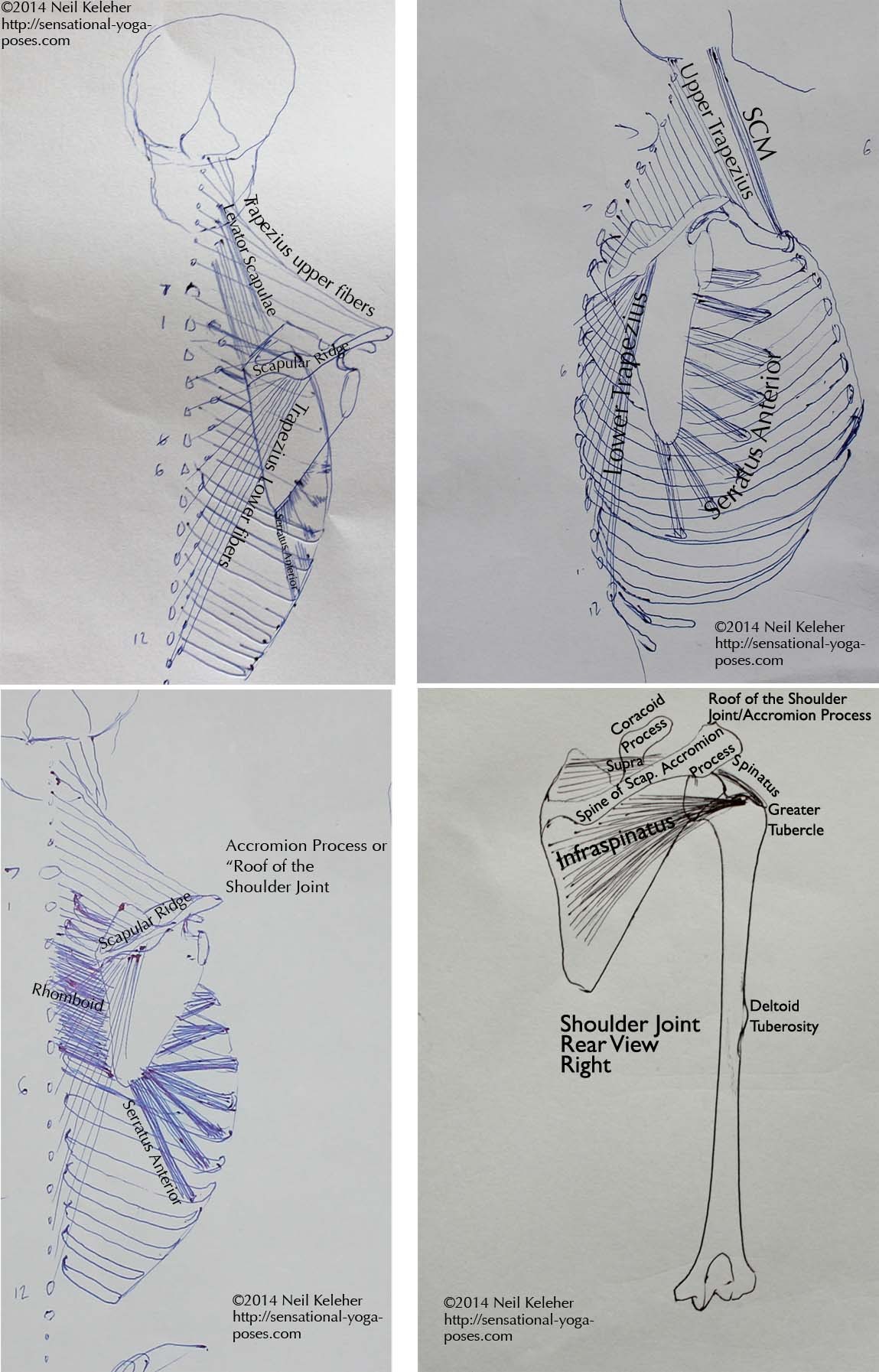
The middle fibers of the trapezius attach to this point. (The upper fibers attach to the outermost third of the collar bones). To activate these fibers, focus on drawing the points of the shoulders upwards and inwards, towards the ears.
It is possible to lift the shoulder blades without them rotating. Then the inner and outer edges of the shoulder blades move upwards together. (The levator scapulae attaches to the inner edge of the top of the scapulae and is the muscle that can be used to pull upwards on this part of the shoulder blade.)
When the focus is just pulling upwards on the peak of the shoulder blade, then ideally the outer edge of the shoulder blade moves up more than the inner edge. This then causes the roof of the shoulder blade to move inwards, towards the centerline of the body while the bottom of the shoulder blade (and the bottom of the shoulder socket) moves outwards.
The bottom tips of the shoulder blades should move outwards automatically but if not it may also help to deliberately focus on moving the bottom tips outwards.
This action, where the peak of the shoulder moves inwards, is so that when the arms reach overhead the humerus doesn’t impinge on the peak of the shoulder.
So that this is easier to do when lifting the shoulders with the arms down, allow the arms to move out to the sides when lifting the shoulders.
Arms Forwards Protractiona and Retraction
Many beginners students find it challenging to protract and retract with the arms forwards. And so that is another action that can be practiced.
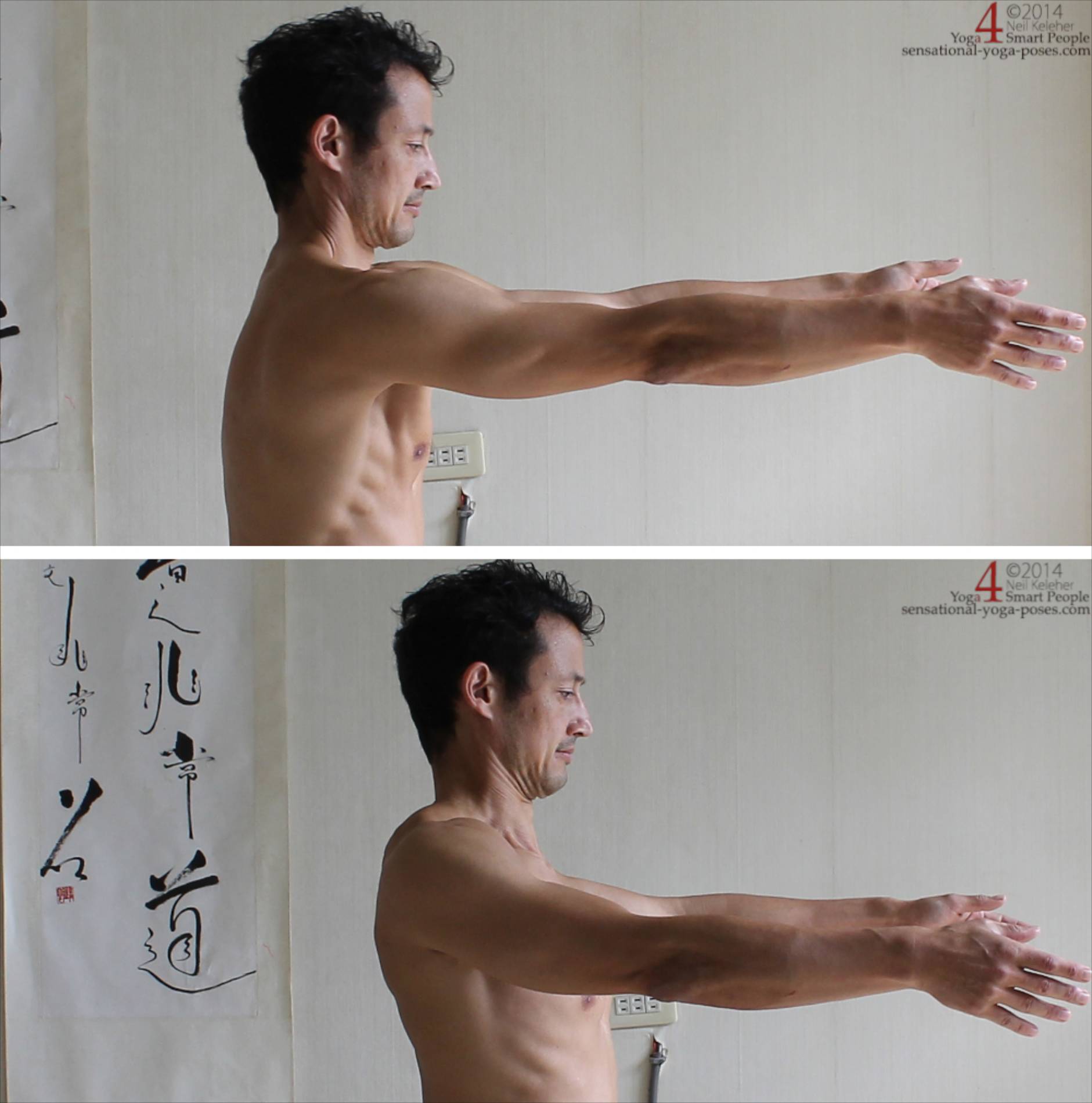
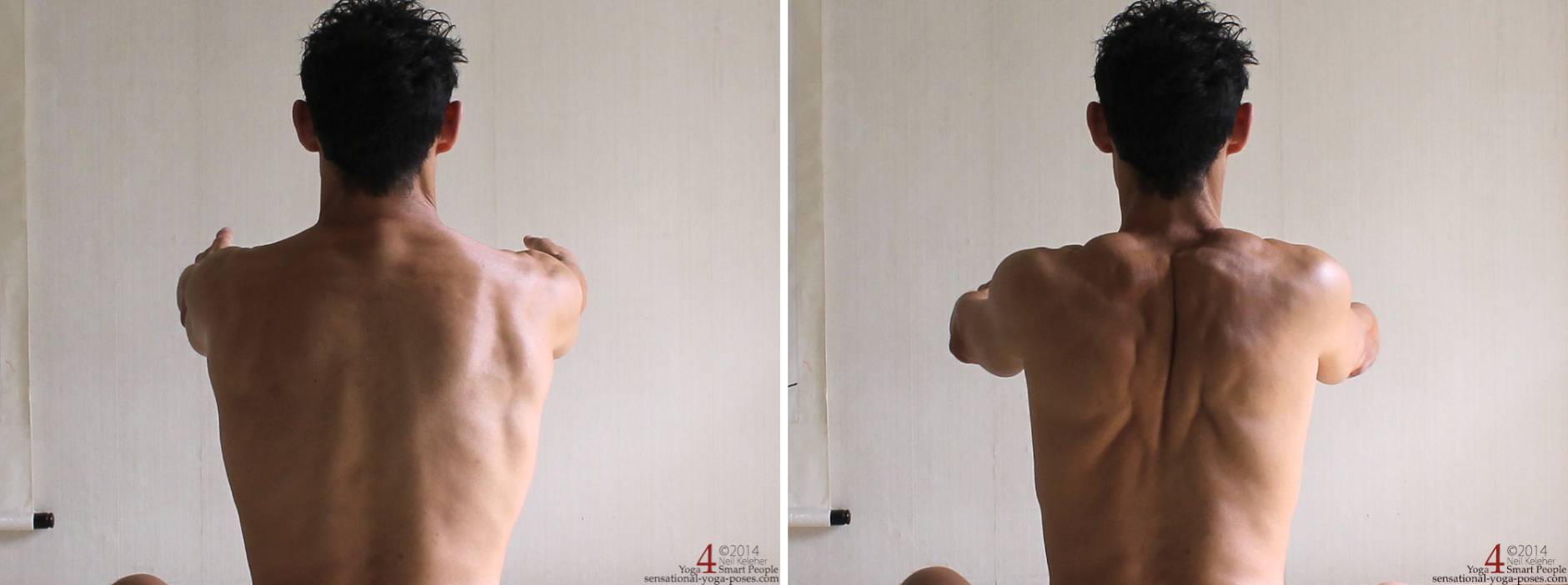
With the arms reaching forwards,
- Spread the inner edges of the shoulder blades.
- Then return to the starting position.
- Then retract the shoulder blades
- Repeat
Arms Lifted Protaction and Retraction
Next pracctice protraction and retraction with arms lifted.
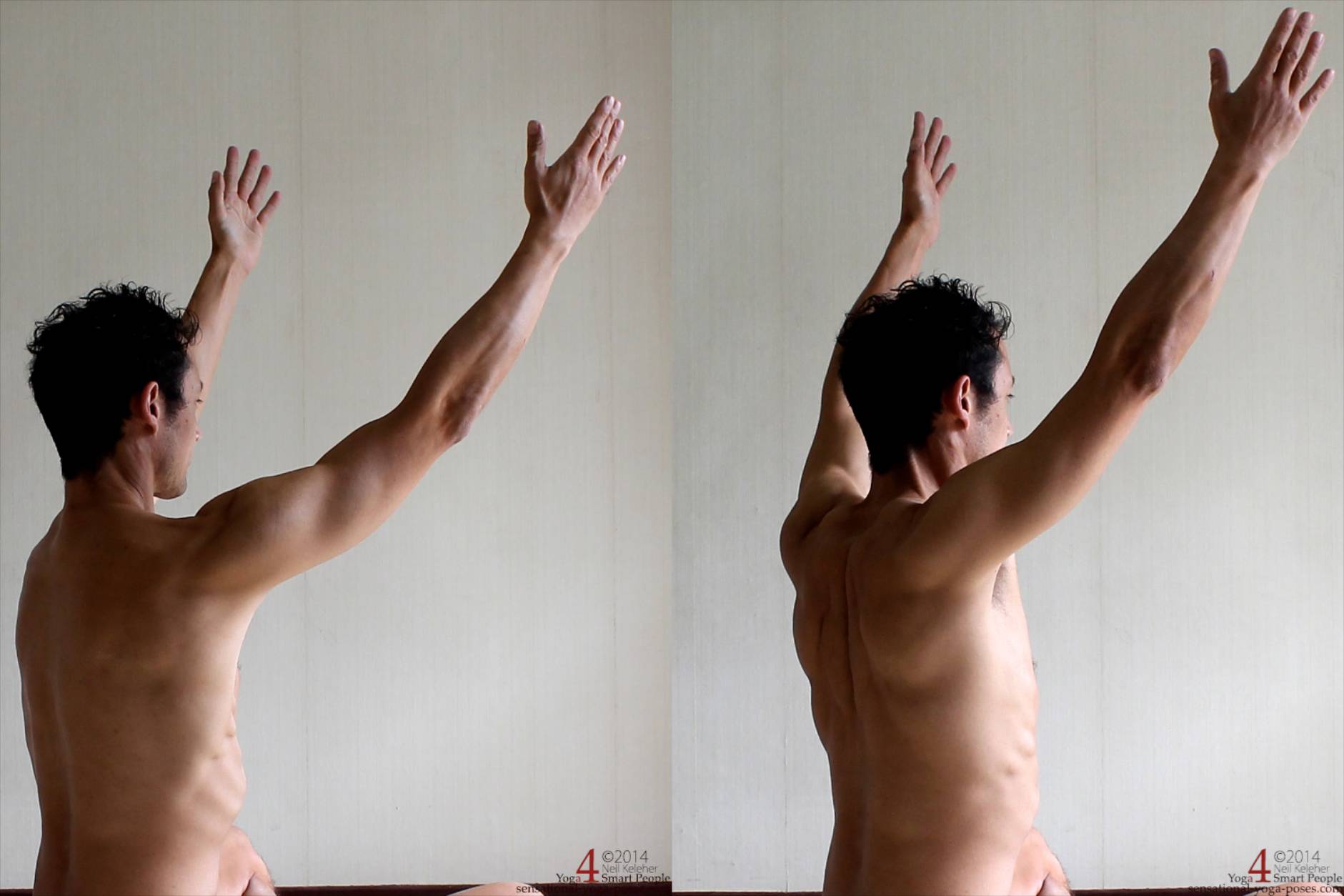
- Move slowly and smoothly.
- focus on the inner edges of your shoulders blades.
Work at doing all actions slowly and smoothly, both the activation phase (i.e. retracting or protracting) and the relaxation phase.
Shoulder Rotations
Shoulder rotations are actually rotations of the upper arm at the shoulder joint.
Basic Arm Rotations
With arms by your sides focus on rotating your upper arm outwards so that the biceps move outwards. Then relax. Repeat a few times then do the opposite, rotate the arms inwards so that the front of the arms roll inwards.
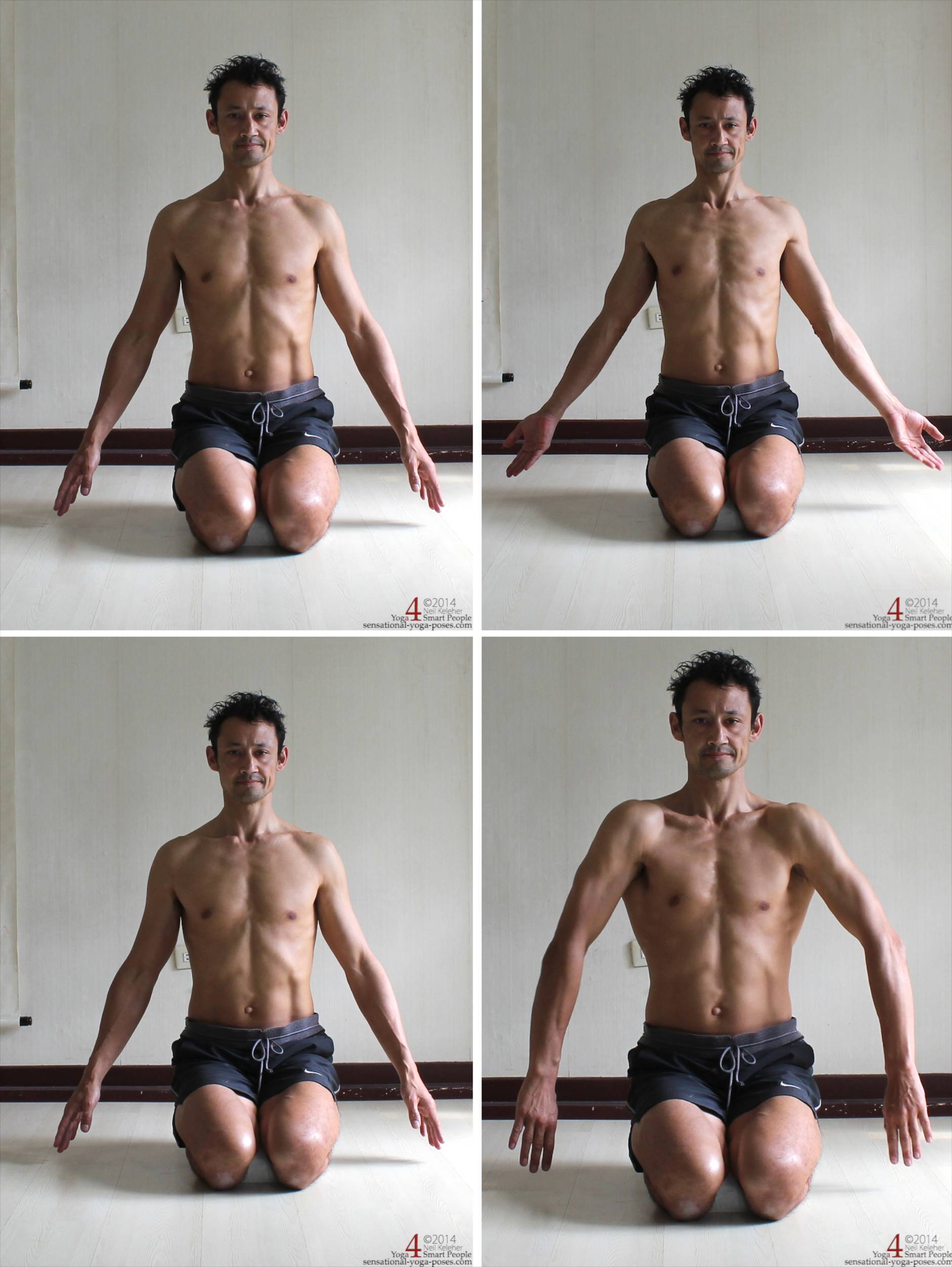
When practicing external rotation focus on feeling the back side (rear surface) of your shoulder blade. You may feel some tension as your infraspinatus muscle activates and then relaxes.
You may also notice that as you externally rotate the front of the shoulder feels “open.”
For internal rotation the rear of the shoulder may feel “open.”
The main internal rotator is the subscapularis which attaches to the front surface of the shoulder blade.
You can also focus on feeling the point of each elbow.
- If the arms are down then as you externally rotate the upper arms the elbows will end up pointing rearwards or even inwards, towards the body.
- As you internally rotate them upper arms, the elbows will point out to the sides.
Rotations can be practiced with arms down by the sides, out to the sides, rearwards, upwards and forwards.
With arms up external rotation will still cause the biceps to move outwards and the triceps (on the backs of the arms) to move inwards.
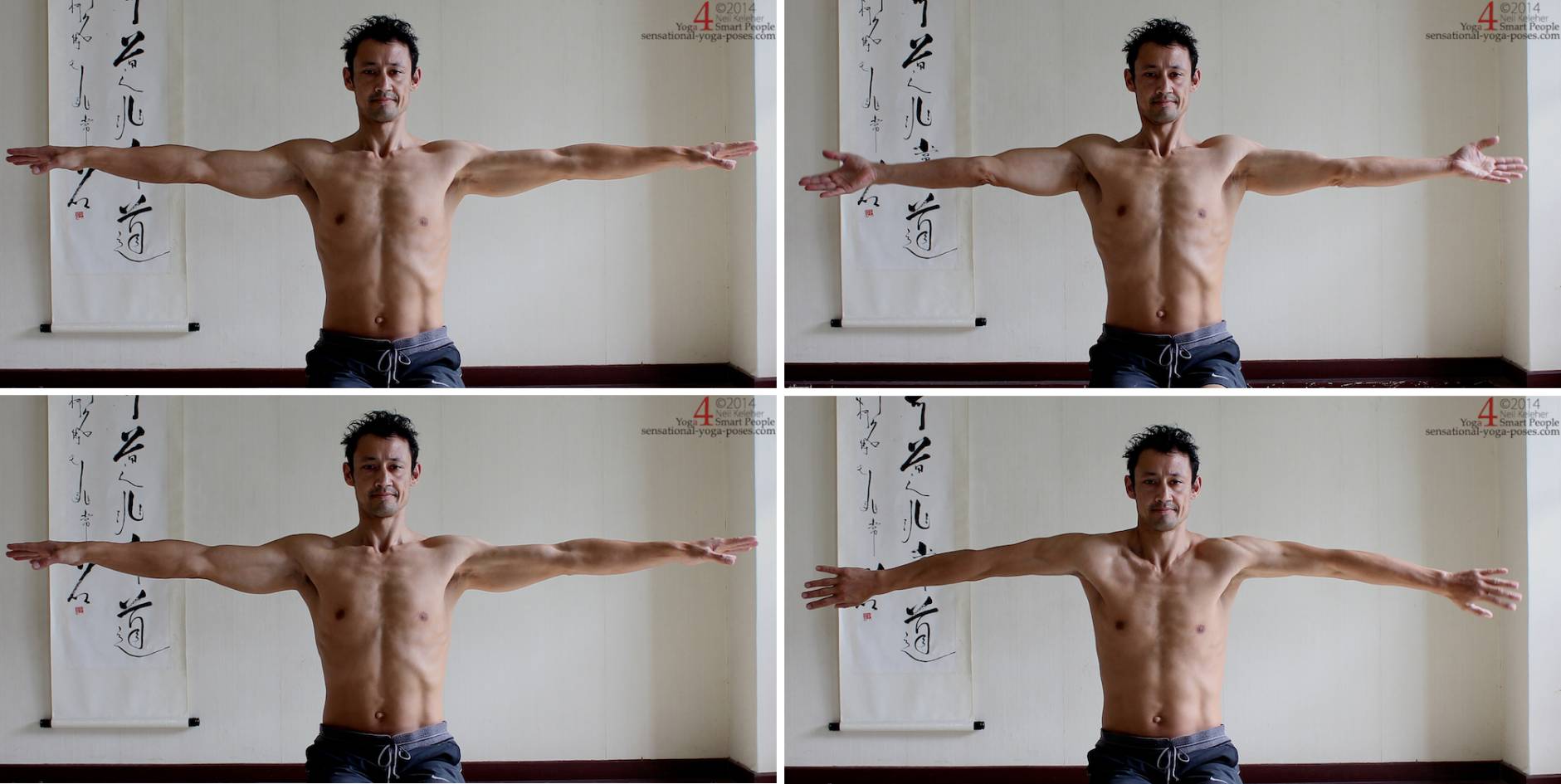
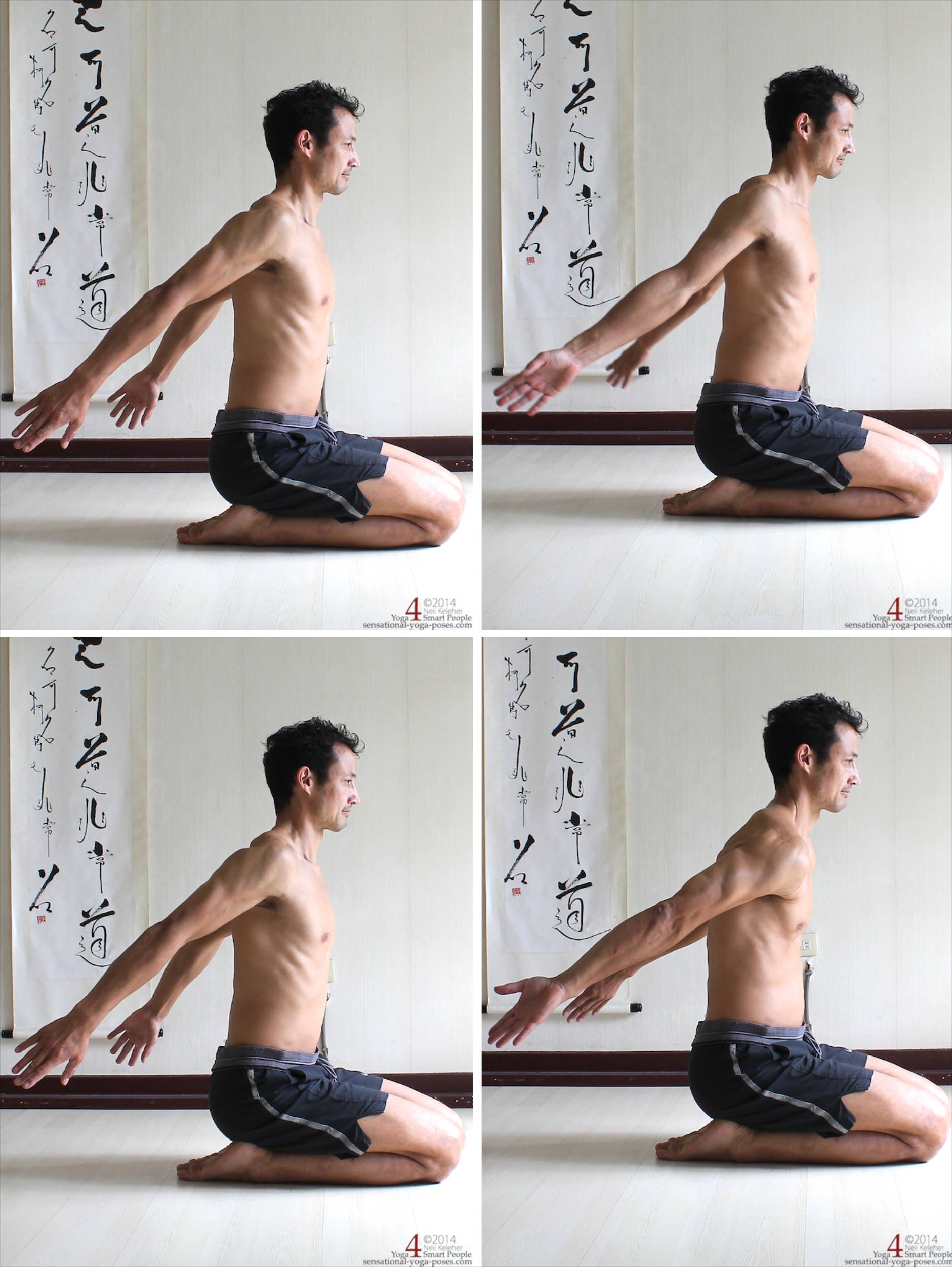

Using Rotation to “stabilize” the shoulder blade
Rotation can be used to stabilize the shoulder joint making the upper arm and shoulder blade one single more massive unit. In this case the muscles that attach between the shoulder blade and ribcage can use the shoulder blades as the foundation and move the ribcage relative to the shoulder blades.
Generally when using external rotation to stabilize the shoulders I focus on externally rotating the arms while at the same time using that action to pull outwards on the bottom tip of the shoulder blade. The effect can feel similiar to when using the serratus anterior to spread the shoulder blades.
I currently use this action as part of the preliminary actions in push up and lifting up into chaturanga dandasana.
Arm Rotation Meditation
An arm rotation exercise that can feel nice as a cool down and meditation is to sit with your arms by your sides elbows bent and forearms horizontal.
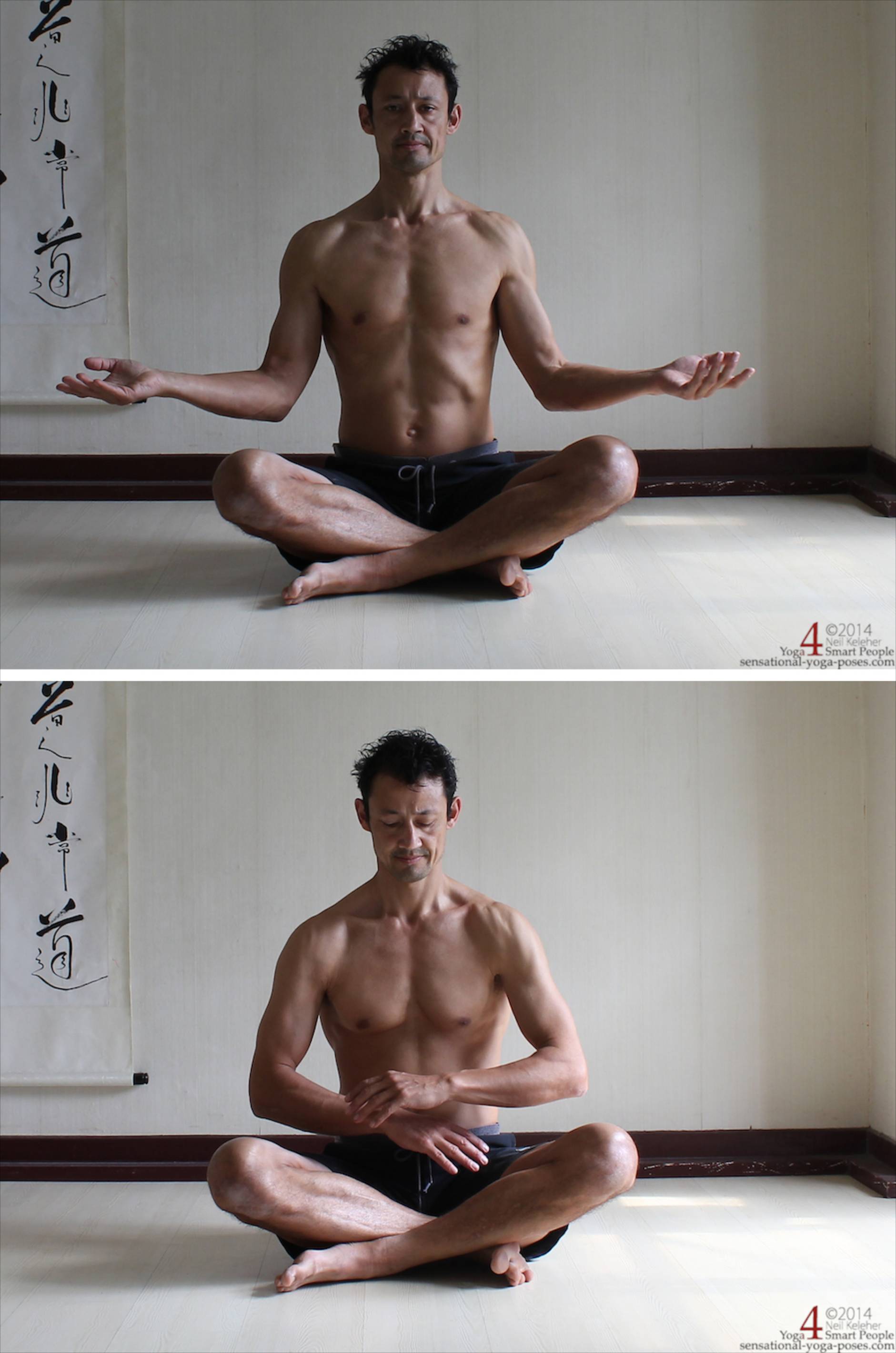
1. Externally rotated.
2. Internally rotated.
While externally rotating the arms, lift your chest and lengthen your neck. When internally rotation, let the head move forwards and down and let your chest sink down also.
In addition, rotate the forearms. When rotating the upper arms externally turn the palms upwards. When rotating internally turn the palms downwards.
Make the actions slow and smooth.
Dance of Shiva Arm Rotations
Some positions that I use as a Dance of Shiva warmup can also be used to practice both upper arm rotation and forearm rotation.

Arms to front, externally rotated then internally rotated,
Arms to side, Internally rotated.
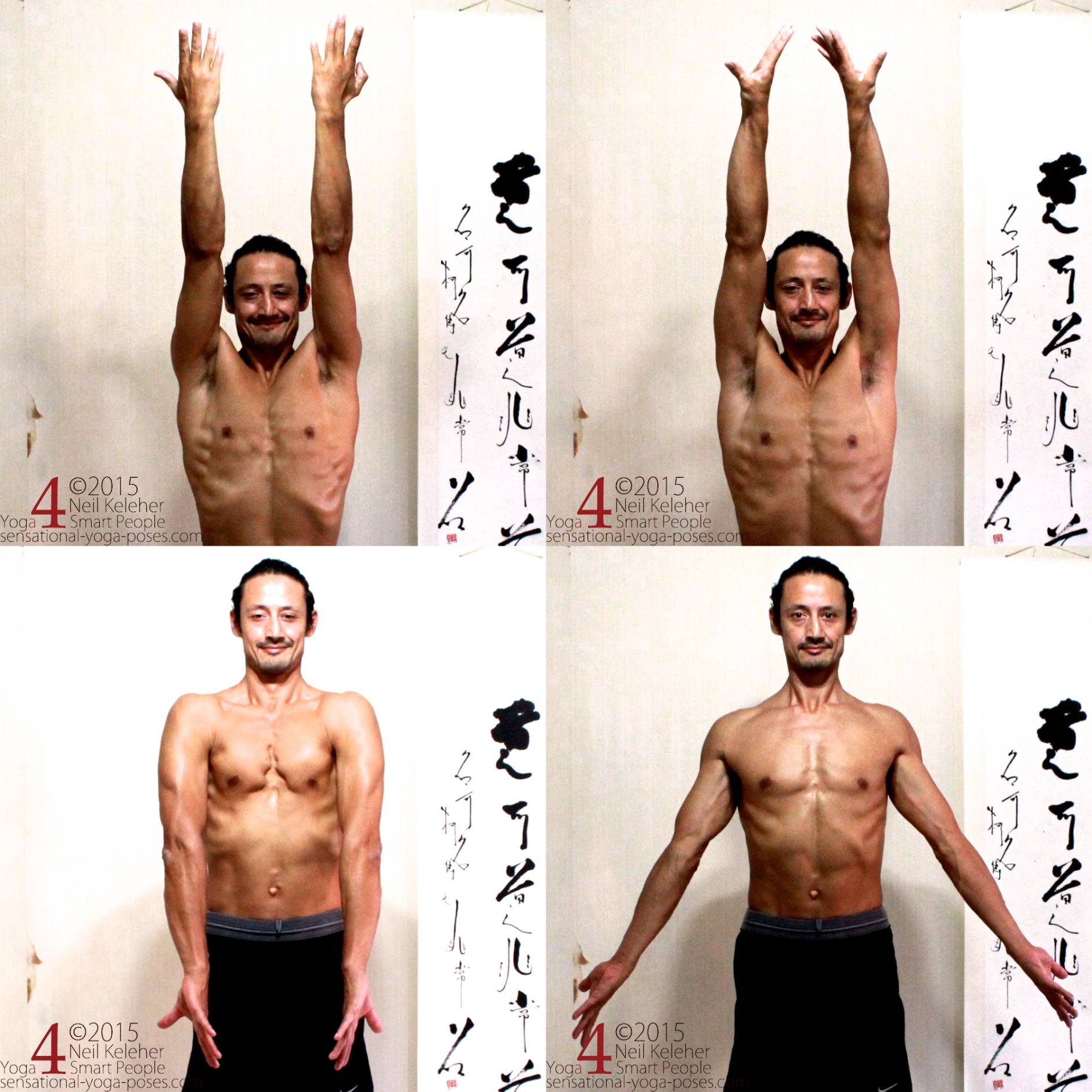
Arms down with internal rotation, then external rotation.

elbows forwards, elbows to sides with palms facing up in front of chin,
elbows to side with palms in front of belly, elbows forwards with backs of hands against sides of waist.
For all of the exercises shown:
- move slowly into the pictured position,
- hold for a few breaths while trying to deepen the rotation of forearms and/or upper arms.
- Keep your neck long and front and/or back ribs open.
Then slowly release and relax. Then move into the next position.
Each of the above warm-ups is designed to assist a practitioner in making the arm positions (and movements) of the dance of shiva slightly easier.
You can read more about the Dance of Shiva here.
Questions, Comments
If you have questions or comments about any of the exercises in this book, or just comments in general, please email me: kneelkeleher@yahoo.com
For more on yoga, body awareness and stretching please visit my website. http://sensational-yoga-poses.com
